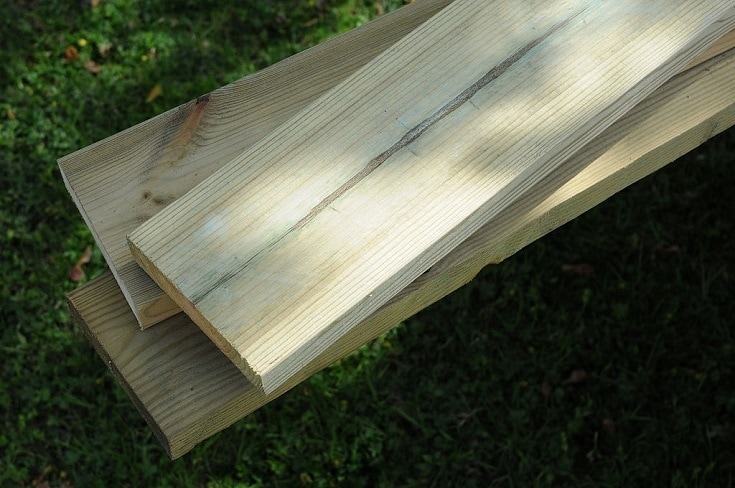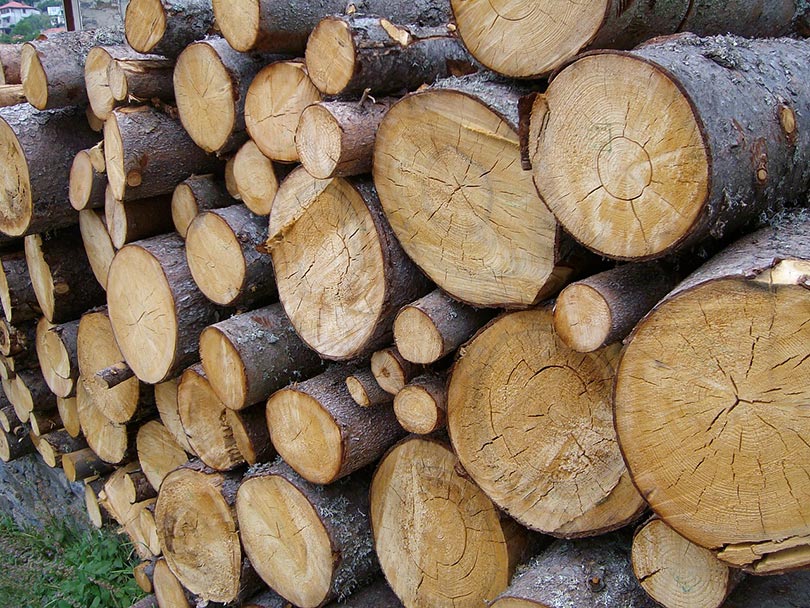How to Tell if Wood is Pressure Treated? 8 Simple Ways
-
Shea Cummings
- Last updated:

Pressure-treated wood is a better option for many construction projects than regular wood. Usually, it is obvious which lumber is treated—but not always. In addition to specific applications needing treated wood, it’s important you know which wood has been treated so you can take extra safety precautions.
If the lumberyard worker is not around to show you which is which, there are several things that you can check. Even if you find some scrap wood, there are still some simple ways you can determine whether it’s treated or not.
 The 8 Ways to Tell if Wood is Pressure Treated
The 8 Ways to Tell if Wood is Pressure Treated
1. Consult the Fact Sheet
If you are still at the lumber yard, this is one of the easiest ways to check. Often the fact sheet is posted near the stack. If not, you can request to see it to confirm what type of wood it is. This sheet will tell you things such as species and include any chemicals used. The presence of copper and tebuconazole are two chemicals that tell you it’s treated.

2. Observe the Color
With an experienced eye, you can often tell just by looking at the wood if it’s treated. This is especially useful if you’ve found some scrap wood to use. If it’s not too badly weathered, a faint olive green is a common color for treated wood—sometimes it can be brown too, so you have to be careful.
If the wood is gray and weathered, carefully cut into it a little bit on an angle. This will give you an accurate look at the actual color.
3. Smell the Lumber
Sometimes, a good sniff is all you need if there’s no written information available and the color doesn’t offer enough clues. Untreated wood should have a natural, outdoorsy smell—similar to what you’d smell walking through the forest.
But if it’s treated, it will often have a strong, chemical-like smell. Typically it’s unpleasant. However, chromated copper arsenate-treated (CCA) wood doesn’t have a smell. In 2003, the use of CCA-treated lumber was banned from many applications. If you suspect the wood may be that old, smelling won’t be a sufficient test.

4. Measure the Lumber
When you purchase lumber from a lumber yard, the measurements are precise. For example, a 2 x 4 piece of wood actually measures 1-½ x 3-½. But if the wood is pressure-treated, it will always be slightly bigger. It will typically be closer to the “true” size.
5. Check the Retention Level
The retention of the level is calculated by the number of chemicals still present after pressure treatment is complete. The more chemicals, the more resistant the wood is. However, a higher retention level also increases the toxicity. So, wood with higher retention won’t be suitable for many projects around the house.

6. Test the Lumber
There are special test kits you can purchase. They are called swipe tests. If all other methods fail, performing one of these tests on the lumber will tell you definitely if any chemicals were used to treat it.
7. Look for the Stamp
When a manufacturer pressure treats the wood with chemicals of any kind, they are required to stamp the wood. These give you less information than some of the other methods. However, they tell you enough to know whether it’s safe or not.
- It’ll confirm that the wood is treated.
- Wood stamped ‘LP22’ is treated with arsenic and isn’t safe for most applications.
- Wood stamped ‘LP2’ is less toxic but still not safe for things like playgrounds or furniture.
- Wood stamped ‘FDN’ is a commonly used and safe treated wood for most applications.

8. Check the End Tag
As long as there is an end tag, this is the easiest method of telling if the wood is treated. The tag will include information such as the type of chemicals and their rating. It’ll also include the company that did the preserving and related information.
What is Pressure Treated Wood?
Pressure-treated wood is various lumbers that have been treated with chemicals. Pressure is used to inject said chemicals into the fibers of the wood.
- Chromated Copper Arsenate: Most toxic of all chemicals used and typically gives the lumber a green color. Since 2003 it’s been prohibited from many applications.
- Copper Azole: This treatment is effective against mold, fungi, and termites. It usually gives the wood a brown color.
- Alkaline Copper Quat: This is a combination of copper and a quaternary ammonium compound. It usually has a tan or olive color and has a strong smell.

Extra Safety Precautions With Pressure Treated Wood
Because pressure-treated wood typically contains harmful chemicals, some safety precautions should be taken when cutting or building with it.
- Eye Protection: You should always wear eye protection when cutting anything. But in the case of treated wood, it’s that much more important that you protect your eyes from getting the dust or splinters.
- Gloves: Again, gloves are typically recommended. However, splinters from pressure-treated wood can become infected quickly and do a lot of damage if not removed right away. Gloves are the best defense in this case.
- Dust Mask: Some people are more affected by sawdust than others. But if you’re cutting treated lumber, you do not want to breathe in the dust as it can cause different health problems—including cancer.
- Wash Hands Afterward: If you are dealing with any treated lumber, ensure that you wash your hands thoroughly after cutting and handling it.
- Do Not Burn: Pressure-treated wood should never be burned. The chemicals are directly inhaled if you do that.
Why Use Treated Lumber?
Even with its toxicity, there are several significant benefits to using treated lumber:
- Moisture-resistant
- Fungal-resistant
- Pest and insect-resistant
- Fire-resistant
- Typically increased durability
 Closing Thoughts
Closing Thoughts
Pressure-treated lumber is necessary for some situations like building fences or outdoor structures that will be subject to the elements. However, it’s important that you know what treatment you’re dealing with to ensure that it’s safe to use for your application. If you’re ever unsure, ask someone that’s familiar with different pressure treatments for assistance.
Featured Image Credit: bricoydeco, Pixabay
Contents
 The 8 Ways to Tell if Wood is Pressure Treated
The 8 Ways to Tell if Wood is Pressure Treated